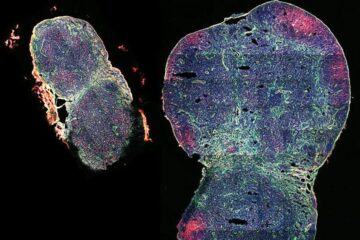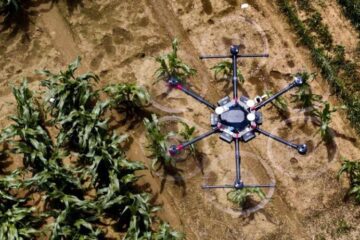A Grab for Iron – Breakthrough for Innsbruck Scientists

Nearly all organisms need iron to survive, even mould. For people with a weakened immune system such fungi pose a deadly threat. Scientists from Innsbruck (Austria) have now been able to genetically block the iron metabolism of Aspergillus fumigatus mould and thus render it harmless to humans. This discovery opens up completely new paths for developing drugs against fungal infections.
The Aspergillus fumigatus mould is commonly found in compost, green bins, potting compost and on wallpaper. For people with a weakened immune system it can become dangerous, attacking organs like lung, stomach, intestine and the nervous system. Because it is difficult to diagnose and treat, such a mould infection (aspergillosis) becomes life-threatening for patients whose immune system has been affected by chemotherapy, HIV infection or an organ transplant. Bacteria can be overcome quite effectively with antibiotics, but there are as yet hardly any effective drugs against mould, which accounts for the fact that 80 percent of affected patients do not survive such an infection.
Fighting mould
Now, for the first time, a working group headed by Hubertus Haas and Markus Schrettl of the Department for Molecular Biology of Innsbruck Medical University has managed to genetically block the iron metabolism of the mould. In a recent article in the acclaimed scientific Journal of Experimental Medicine they proved that the siderophore system is essential for the virulence of Aspergillus fumigatus. The mould uses the so-called siderophores for the reception of vital iron.
These low-molecular-weight peptides can bind iron and are sent out by the cells to absorb iron as well as being used inside the cell to store it. If this siderophore system is systematically disrupted, the fungus loses its essential iron supply and dies. In animal modelling this has been proven successfully. Being able to understand this mechanism offers very promising perspectives for the development of new therapies against fungal infections. Of particular advantage is the fact that humans do not have a comparable system, which bodes well for potential inhibitors having few side-effects.
“Gaining detailed insights into the siderophore metabolism enables us to investigate the system as a potential handle for combating aspergillosis and other fungal infections,” Hubertus Haas explained the impact of this breakthrough. “So far we have been able to identify at least 30 genes with gene products involved in this system. At the moment we are carrying out microarray-profiling, which should uncover additional factors,” Haas continued.
Basic research and application potential
The working group from Innsbruck has been exploring the iron metabolism of mould since 1998, supported by research funds from the Austrian Science Foundation (FWF) and the Austrian National Bank (ÖNB). As the new approaches for antifungal therapies show, there is a wealth of application potential in such basic molecular-biology research into identifying and characterizing the siderophore system. A novel screening process for antifungal substances – for which a patent is pending – recently won the Life Science Business Award of the Center for Academic Spin-offs Tyrol (CAST).
Media Contact
All latest news from the category: Life Sciences and Chemistry
Articles and reports from the Life Sciences and chemistry area deal with applied and basic research into modern biology, chemistry and human medicine.
Valuable information can be found on a range of life sciences fields including bacteriology, biochemistry, bionics, bioinformatics, biophysics, biotechnology, genetics, geobotany, human biology, marine biology, microbiology, molecular biology, cellular biology, zoology, bioinorganic chemistry, microchemistry and environmental chemistry.
Newest articles

Expanding a lymph node, boosting a vaccine
A biomaterial vaccine enhances and sustains lymph node expansion following vaccination, boosting anti-tumor immunity in an animal model. Each one of us has around 600 lymph nodes (LNs) – small,…

AI to Make Crop Production More Sustainable
Drones monitoring fields for weeds and robots targeting and treating crop diseases may sound like science fiction but is actually happening already, at least on some experimental farms. Researchers from…

Cruise Ship as Data Collector
New Approaches in Ocean Observation… Scientific research – not only confined to dedicated research vessels but also from non-scientific vessels and marine infrastructures. This is one of the ideas promoted…





















